Galileo Galilei and his law of free fall
We explain the Galileo Galilei and his law of free fall. The law of free fall of Galileo Galilei states that the distance traveled by a body that is released freely from a height is proportional to the square of the time taken to traverse. galileo’s law of free fall
And since time only depends on height, all bodies hit the ground at the same time, regardless of their mass, when dropped from the same height. galileo’s law of free fall
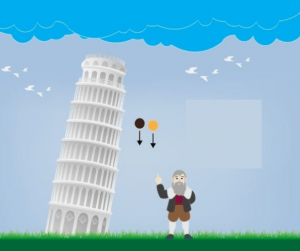
Galileo, one of the most brilliant scientists of all time, was born in the Italian city of Pisa in 1564.
By that time, Aristotelian beliefs about the nature of the movement were shared by most of the scientific community. Aristotle (384-322 BC) was a notable ancient Greek thinker, who had embodied his beliefs about science in the 200 works he is believed to have written in his entire life. galileo’s law of free fall
Only 31 of these works survived to this day, and in them the Greek philosopher explained his vision of nature, which is known as Aristotelian physics . One of his postulates is the following: when two bodies are dropped from equal height, the heaviest always reaches the ground first.
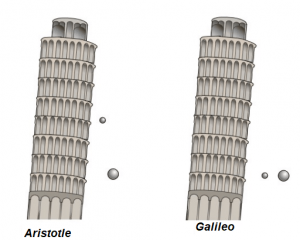
Galileo put this long-held belief to the test and thereby began the development of experimental science, a revolution that led humanity to take its first steps outside of Earth, and expanded the known universe to an unsuspected size.
Galileo’s experiments galileo’s law of free fall
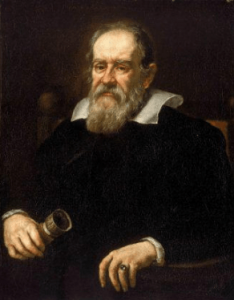
Today we are taught that all objects, regardless of their mass, reach the ground at the same time when they are dropped from a certain height. This is because all without exception, move with the same acceleration: that of gravity. Of course, as long as air resistance is neglected.
We can check this by simultaneously dropping a heavy and a light object from the same height, for example a stone and a crumpled sheet of paper, and we will see how they reach the ground at the same time.
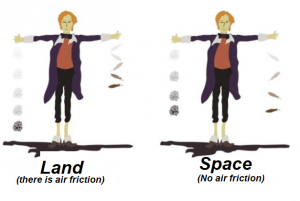
Galileo in the tower of Pisa
Galileo was determined to test Aristotelian beliefs through careful experimentation and mathematical development. Legend claims that he dropped objects from the top of the famous Leaning Tower of Pisa, measuring the time it took for each to fall.
It is questionable that Galileo expressly climbed to the top of the tower for this purpose, since in any case the precise measurement of such a short time – approximately 3.4 s – with the clocks of the time was not possible.
But it is said that on one occasion Galileo gathered many people at the foot of the tower to verify for themselves that in fact, two bodies of different masses reached the ground at the same time.
However, the Italian physicist did record in his books other experiments to study motion and thus find out how things move.
Among these are those of the simple pendulum, which consists of hanging a mass from a light rope and letting it oscillate and even some in which he tried to measure the speed of light (without success). galileo’s law of free fall
The truncated pendulum galileo’s law of free fall
Among Galileo’s many experiments was one in which he used a pendulum, to which he drove a nail somewhere between the beginning of the movement and the lowest position.
With this he intended to truncate the pendulum, that is, to shorten it. Once the pendulum hits the nail, it is returned to the starting point, which means that the speed of the pendulum only depends on the height from which it was released, and not on the mass that was hanging from the pendulum.
This experiment inspired him to the next, one of the most remarkable performed by the great physicist and by which he established the principles of kinematics. galileo’s law of free fall
Inclined plane experiments
The experiment that led Galileo to formulate the law of free fall was that of the inclined plane, on which he let lead spheres roll from different heights and with different inclinations. He also tried to push the spheres up and measure the height they reached. galileo’s law of free fall
Thus he showed that all bodies fall with the same acceleration as long as friction does not intervene. This is an ideal situation, as friction never completely disappears. However, an inclined plane of polished wood is a good approximation.
Why did Galileo decide to use an inclined plane if he wanted to see how bodies fell?
Very simple: because there were no appropriate clocks to accurately measure the fall time. Then he had a brilliant idea: to slow down that fall, “smoothing” gravity by means of a device.
Steps of the experiment
Galileo carried out the following sequence and repeated it “about a hundred times” to be sure, as stated in his book Dialogues on Two New Sciences : galileo’s law of free fall
-He took a plane of polished wood about 7 m long, which he had commissioned from a carpenter, and placed it with a certain angle of inclination not very large.
-He let a sphere roll downhill at a certain distance.
-He measured the travel time.
He repeated the above with increasing inclinations.
Galileo’s observations galileo’s law of free fall
Galileo observed that regardless of the angle of inclination:
-The speed of the sphere increased at a constant rate -the acceleration-.
-The distance traveled was proportional to the square of the time spent.
And he concluded that this would be true if the ramp were vertical, which certainly amounts to a free fall.
Formula galileo’s law of free fall
If d is distance and t is time, Galileo’s observation, mathematically, can be summarized as:
d ∝ t 2
Today we know that the constant of proportionality required to establish equality is ½ g, where g is the value of the acceleration of gravity, to obtain:
d = ½ gt 2
The accepted value of g today is 9.81 m / s 2 .
Two inclined planes facing each other
Galileo not only let the spheres roll down the plane, he also faced two inclined planes to see how far up a sphere that was allowed to slide. galileo’s law of free fall
And he found that the sphere managed to rise to the same height from which it started. Afterwards, the angle of inclination of the second plane decreased, as shown in the figure below, until it was completely horizontal.
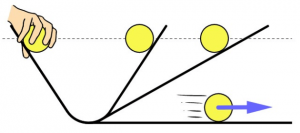
In all cases, the sphere reached a height similar to that of departure. And when the second plane turned horizontal, the sphere could move indefinitely, unless the friction slowed it little by little.
Contributions of Galileo’s experiments
Galileo is considered, along with Isaac Newton, the father of Physics. These are some of the contributions to science from his experiments: galileo’s law of free fall
-The concept of acceleration, fundamental in the study of the kinematics of bodies, in this way Galileo laid the foundations of accelerated motion, and with it those of Mechanics, which Isaac Newton would later strengthen with his three laws.
-He also stressed the importance of the friction force, a force that Aristotle had never considered.
-Galileo showed that the continuous action of a force is not required to maintain the movement of a body, since in the absence of friction the sphere continues to move indefinitely on the surface of the plane. galileo’s law of free fall
One Comment